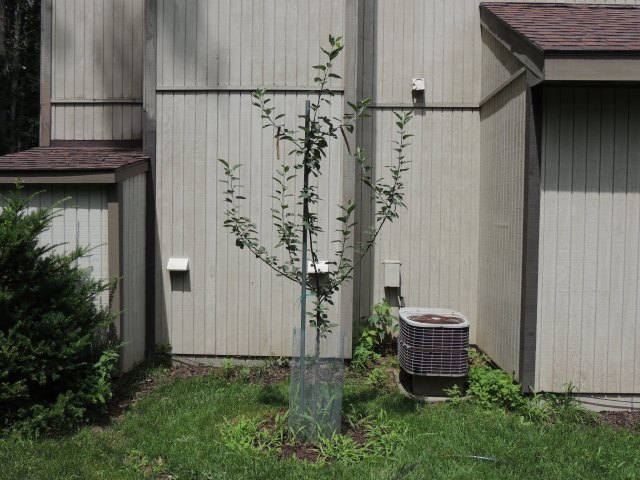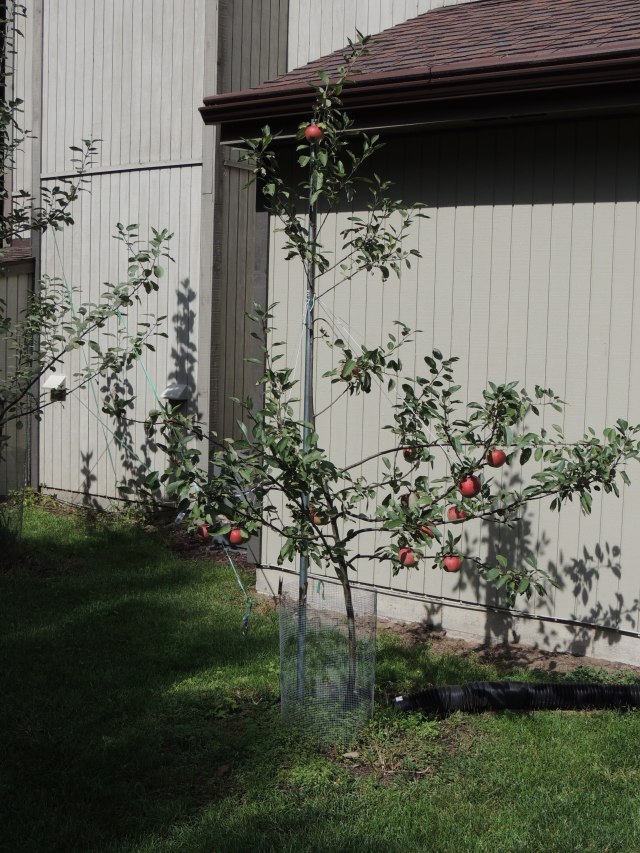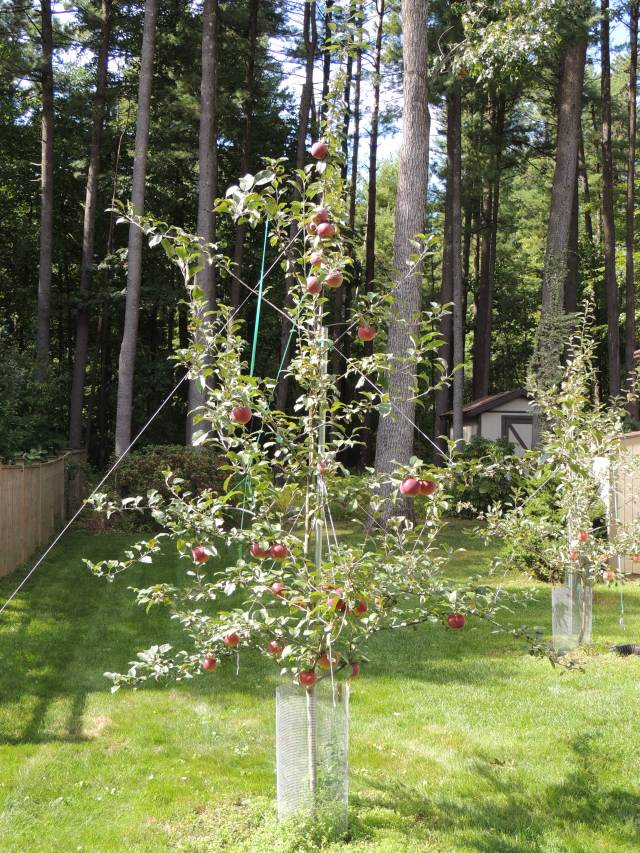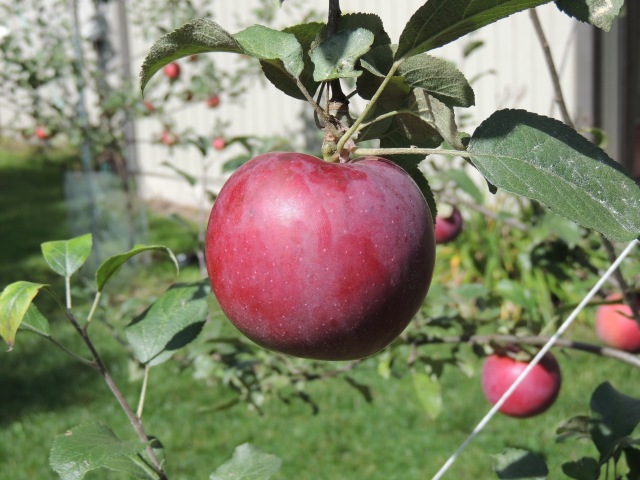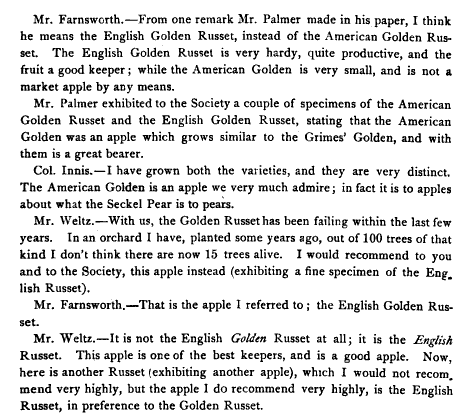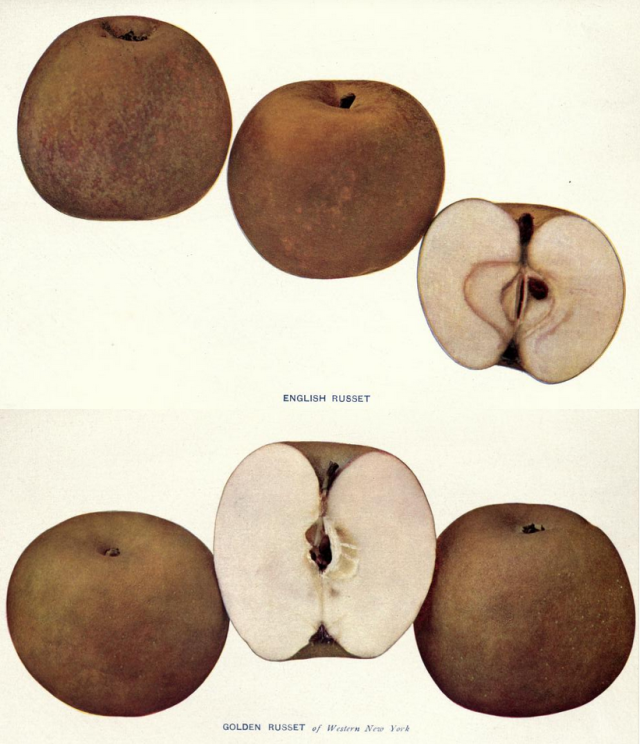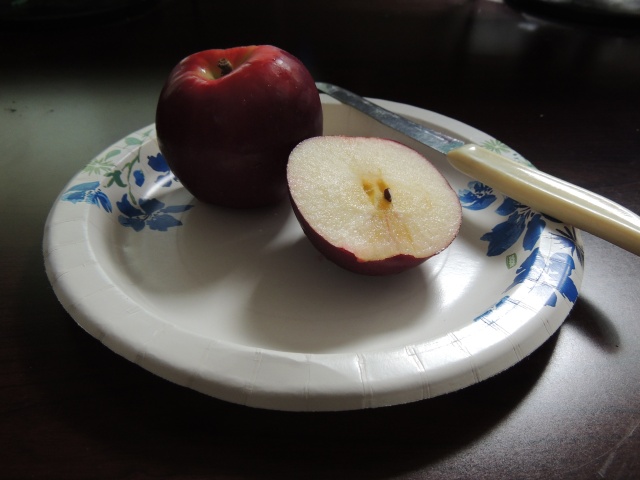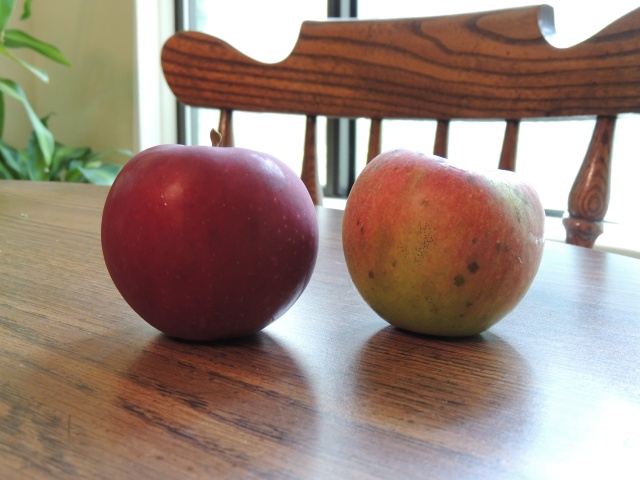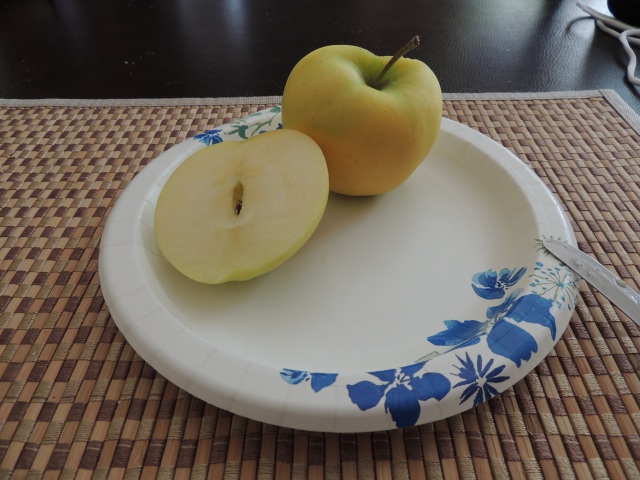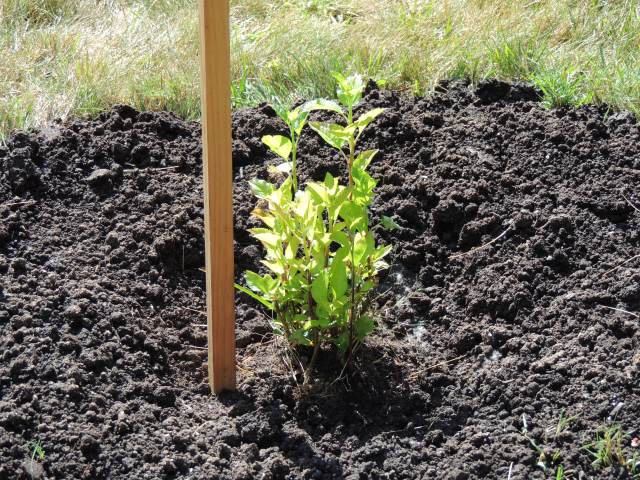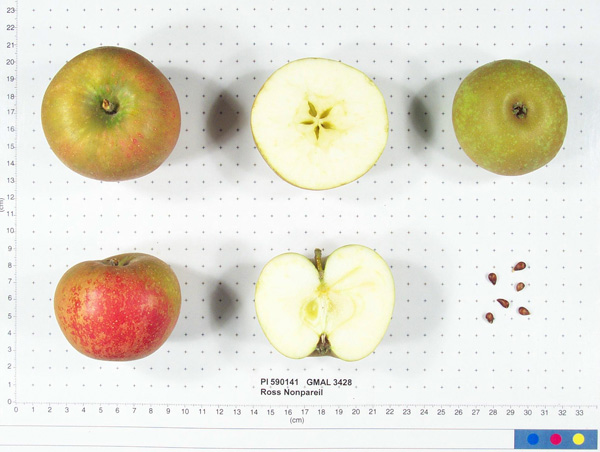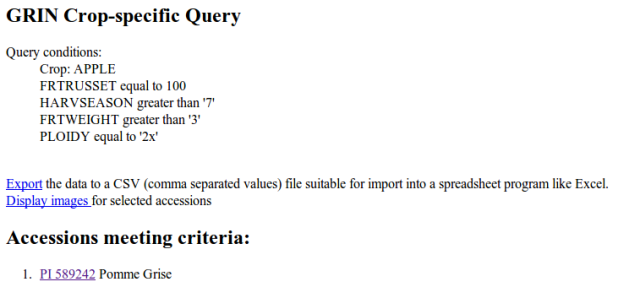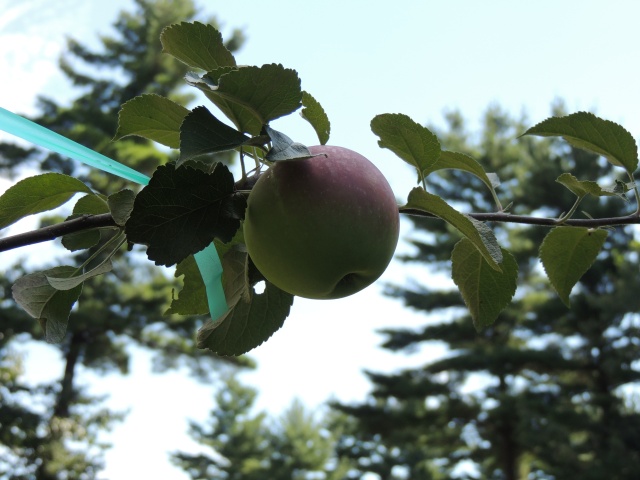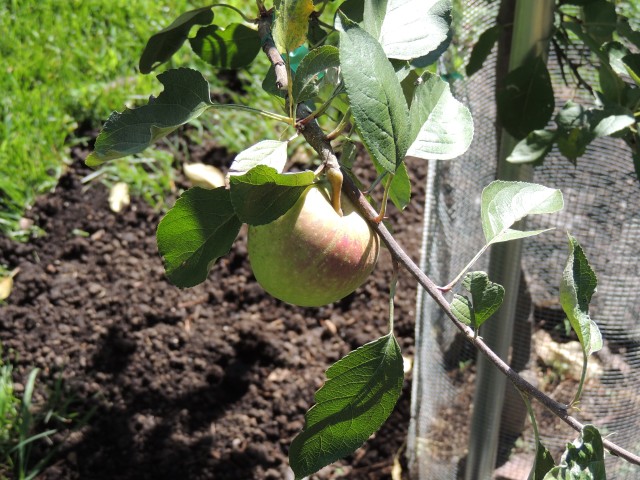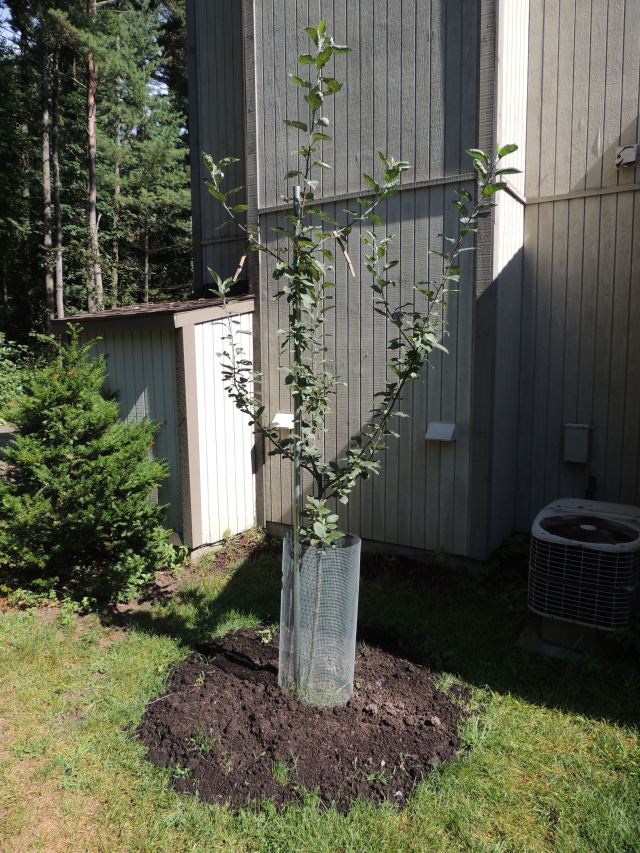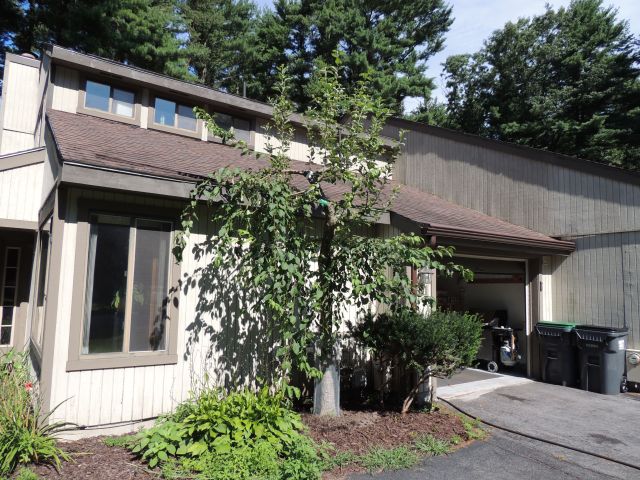This post has been a long time coming, but I will update on what I’ve been up to thru the offseason so far.
Well, the grafting went reasonably well. Grafting was done first week in April. I did it so early because with cleft grafting you take a chance with the cambium layer separating from the rest of the branch if you wait too long in the season to split it. The cambium becomes moist and loose later in the season, into May.
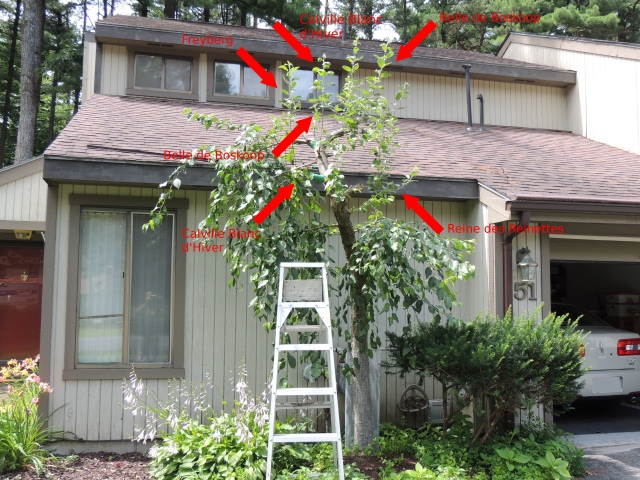
What did I graft?
Belle de Boskoop – From the Netherlands, known for its use in strudel and its prolonged keeping ability. I had these last year, and they kept for a very long time, probably would have made it to May. Large, dense, sour eating off the tree but well balanced when used after the new year. Vigorous tree, grafted on the north side of the tree where it can be allowed to consume a large amount of space without hindering other varieties. About 3 feet of thick growth in 3 months. Also grafted as a new central leader into a injury callous on June 6th, its put on about 6″ of growth in a month, also getting thicker.
Photo: Both grafts, the giant scaffold graft on the right, and you can see the injury callous graft on the left, wrapped in green plastic tape.
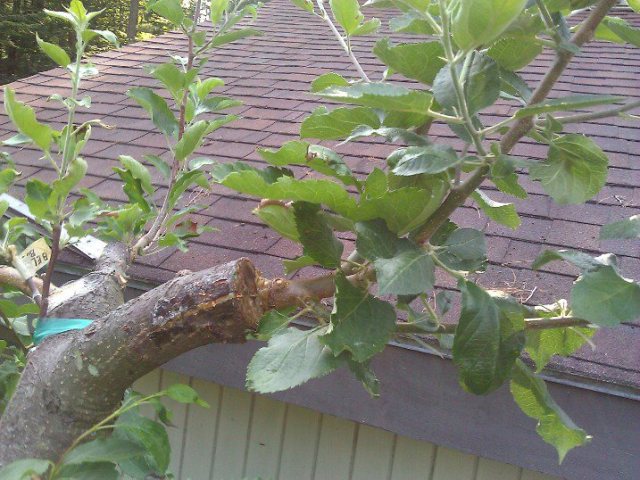
Calville Blanc d’Hiver – Classic French cooker, Cristin loves it and is always looking forward to using these each year. I call these champagne effervescence. Very different apple, ugly in appearance but amazing as a cooker. More vigor than I anticipated.
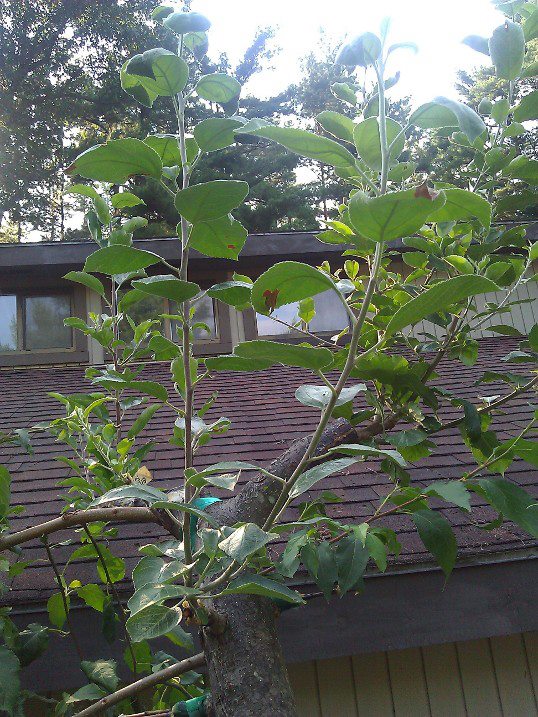
Reine des Reinettes – Another heirloom French variety. This one is more of an all purpose apple. Keeps reasonably well, nice sweet/tart balance, juicy. Mid Season. Seems to be of moderate vigor, slightly behind Calville Blanc and Belle de Boskoop.

Freyberg – The wildcard. Never have had this one, but I’ve had its siblings (Kidd’s Orange Red) and its parents (Golden Delicious & Cox’s Orange Pippin). Its a desert apple said to taste almost tropical in nature. Mid season, vigor seems to be moderate.
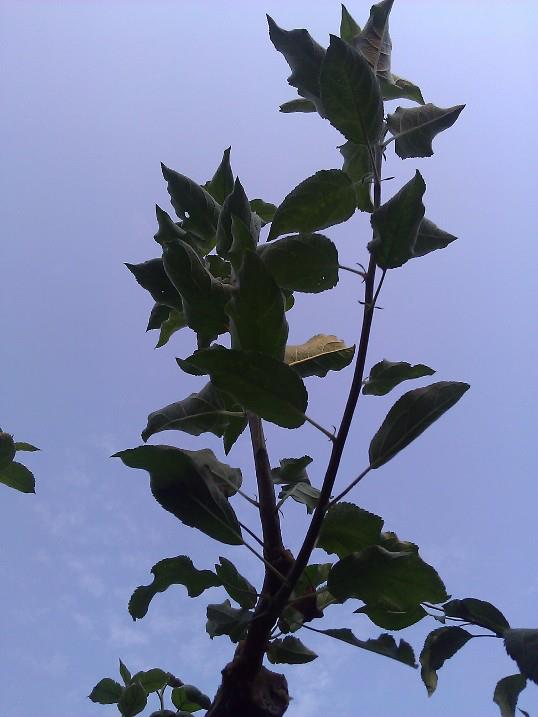
Notes on grafting:
A few lessons learned.
1. I wish I had waited a couple more weeks to graft, I dont think it would have hurt to wait until mid to late april to graft. The tree started to wake up early April, and I got anxious, so I grafted in 25 degree weather early in the morning. The grafts really didnt wake up until first week in May, so there is a window there for sure. I grafted Belle de Boskoop as the new central leader June 6th and within 5 days a saw growth, so in the future i’ll wait until at least 3rd week in April to graft.
2. Make sure the scion wedges are shaped with a longer taper. I lost a couple of grafts because I was more concerned with the wood drying out than doing a good job. I lost a 2nd Freyberg graft and a 2nd Reine des Reinettes graft because of sloppy work.
3. When inserting the wood at an angle, start in the rind and angle the scion inward. This is a lesson from last year when I attempted 1 Liberty graft for fun and it didnt work out because I aligned the wood on the outside edge of a large scaffold. It never had a chance from day 1 because the cambium layers didnt match up.
4. Do a good job, but dont meddle. Get the grafts done to the best of your ability but dont harp on it being perfect. I had an AWFUL practice graft on June 6th take, and I ripped it off today because its competing with the new central leader graft. It was sloppy, but it still took. The key is cambium contact, it doesnt seem like it matters how big the contact point is, the tree heals over it and does the rest.
5. Take off wraps after you see the wrapping material get tight. As Stephen Hayes says about when to take the wraps off: “If you dont wait long enough, you’ll be sorry, and if you wait too long… you’ll be sorry.” For me, 8 weeks seemed appropriate. I removed the wraps on those grafts and all is well.
6. Expensive grafting materials arent necessary to graft. I used a razor bladed utility knife with a fresh CLEAN blade to shape my scions with 1 smooth pulling cut. I heard from somewhere “Remember we’re not whittling a toy boat, one smooth pull”. Trowbridge grafting wax and a roll of Parafilm. 1/2″ green plastic nursery tape. A long tapered flat head screw driver for keeping the clefts open for grafting. Opinel #10 to split large wood. I didnt even use my #6, but I will probably use that as a clean up knife for stock growths. Last but not least, Rubbing Alcohol to keep my tools sanitary and clean between cuts.
7. I prefer bark grafts now. After going in with a cleft graft is easy mentality, I think I prefer bark or rind grafts because the cambium contact is so easy to make. I did a horrible job on one up in the tree, and it still amazingly took. I cant say the same for the cleft because the contact point has to be crossed at a small spot and your tapering of the scion has to be dead on. Bark or rind grafts have to be done when the cambium is wet and active, likely mid May.
Musings on future grafts.
Cristin’s gonna kill me most likely but I am considering a 5th and final variety to graft to the Frankencrab called Golden Nugget. I love Golden Russet, and I really cant have that apple here. Im avoiding a fireblight and bug magnet, and that apple is certainly one of them. Its an early season variety ready early September, and it would kick off our harvest season about 2 weeks before Jonamac. Its a Cox’s Orange Pippin and Golden Russet cross. Montgomery Place Orchards has it. I’ll be looking for it there in September to try, then I’ll make a decision.
Current tree updates:
Jonamac – Skyscraper at this point, 11 feet and counting, still weak looking. I’ll probably have to prune it some come early March to get it to thicken up and hold more apples better. Spring was very wet during bloom, 3 apples this year. Its probably best, it needs to thicken up.
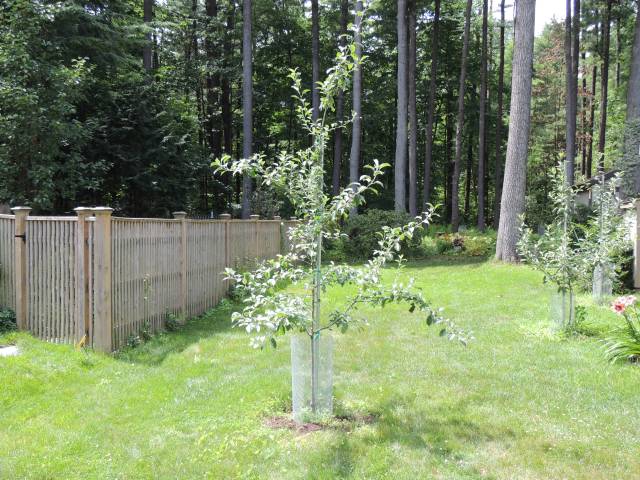
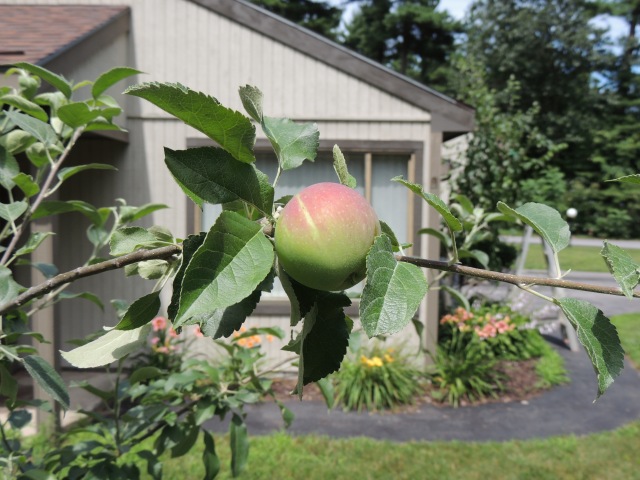
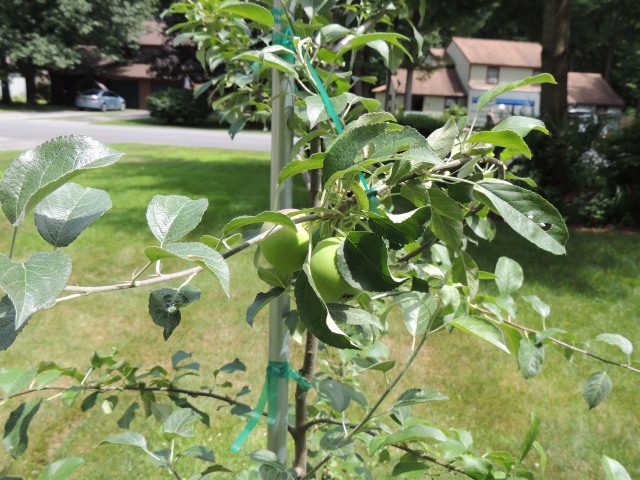
Kidd’s Orange Red – This tree is a gem, very little interaction from me. 3 apples as well.
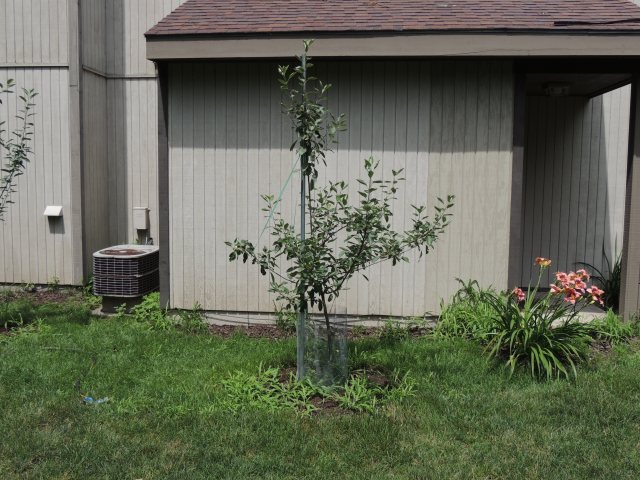
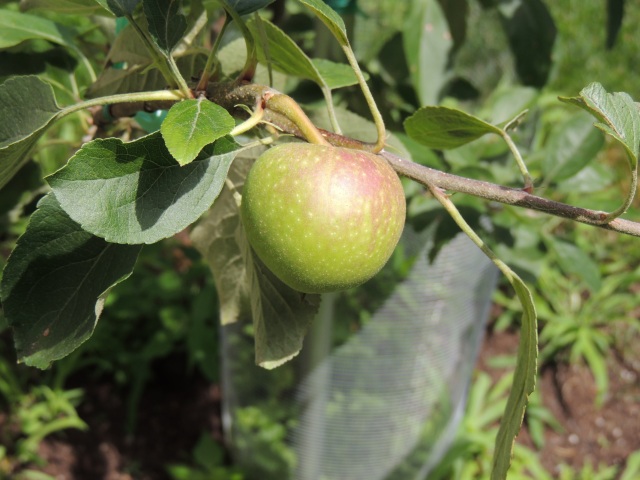
Orleans Reinette – I was warned that this tree was slow to grow by Cummins Nursery and they were right. Slow to fill out, late to get started each season. I wish I had planted it 2 feet further out of the cut out area of my house, so the house doesnt block the early morning sun at 8AM, so it loses an hour of sun. Probably not a big deal, the upper part of the tree get the most sun anyway. No apples, but a strong, thick grower.
